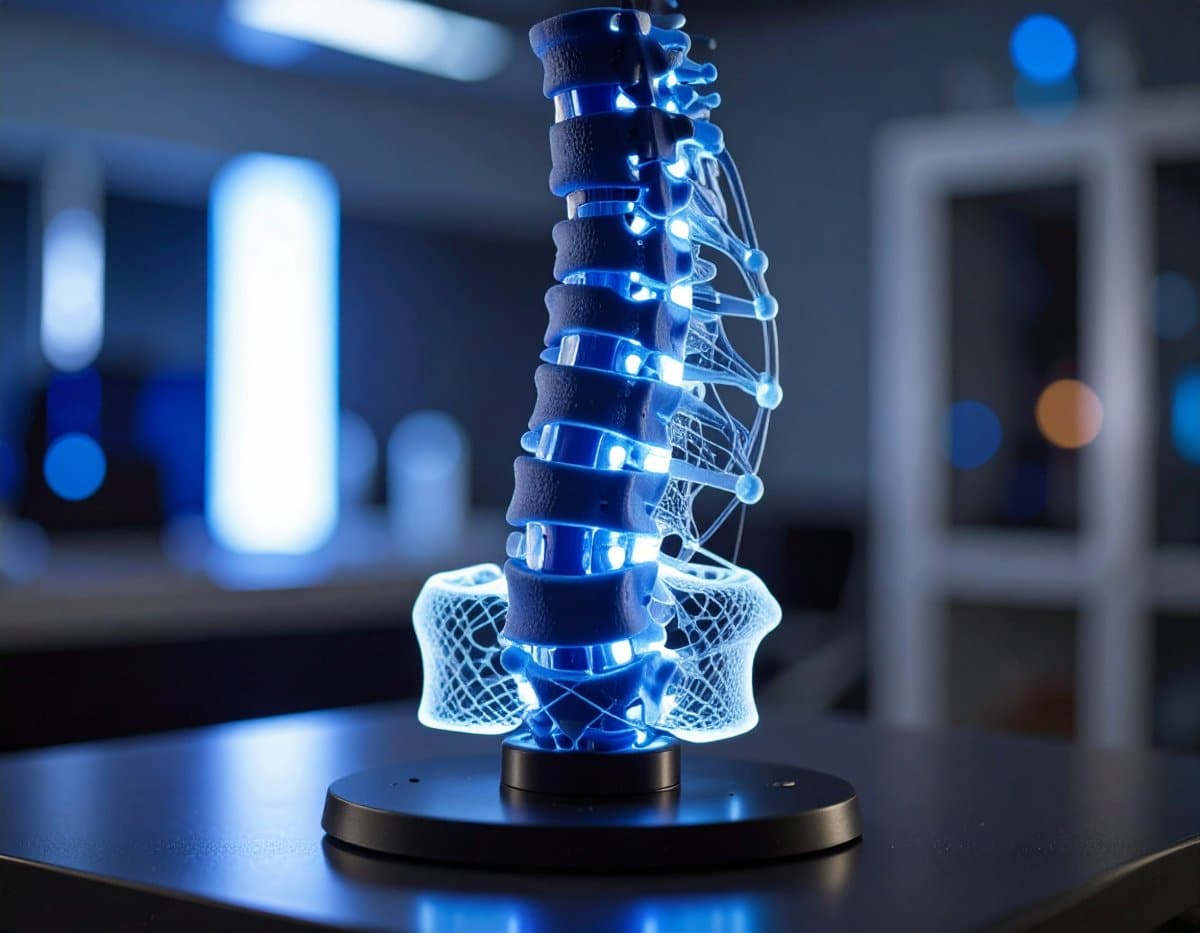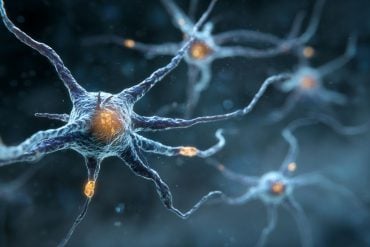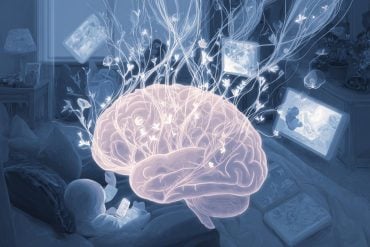Summary: Scientists have developed a 3D-printed implant that delivers targeted electrical stimulation to damaged areas of the spinal cord, promoting nerve regeneration. The implant mimics the spinal cord’s structure with a fine, electrically conductive mesh, boosting neuron and stem cell growth in lab tests.
By adjusting the fibre layout, the team improved the implant’s effectiveness, opening possibilities for wider medical use. This innovative approach could revolutionize treatment for spinal injuries and beyond, thanks to collaboration between engineers, clinicians, and patients.
Key Facts:
- 3D-printed implant stimulates nerve repair by delivering electrical signals.
- Conductive nanomaterials and customizable fibre patterns enhance neuron growth.
- Technology could also apply to cardiac, orthopedic, and neurological healing.
Source: RCSI
A research team at RCSI University of Medicine and Health Sciences has developed a 3-D printed implant to deliver electrical stimulation to injured areas of the spinal cord offering a potential new route to repair nerve damage.
Details of the 3-D printed implant and how it performs in lab experiments have been published in the journal Advanced Science.

Spinal cord injury is a life-altering condition that can lead to paralysis, loss of sensation and chronic pain. In Ireland, more than 2,300 individuals and families are living with spinal cord injury, but no treatment currently exists to effectively repair the damage.
However, therapeutic electrical stimulation at the injury site has shown potential in encouraging nerve cells (neurons) to regrow.
“Promoting the regrowth of neurons after spinal cord injury has been historically difficult however our group is developing electrically conductive biomaterials that could channel electrical stimulation across the injury, helping the body to repair the damaged tissue” explains Professor Fergal O’Brien, Deputy Vice Chancellor for Research and Innovation and Professor of Bioengineering and Regenerative Medicine at RCSI and Head of RCSI’s Tissue Engineering Research Group (TERG).
“The unique environment provided by the AMBER Centre which sees biomedical engineers, biologists and material scientists working together to solve grand societal challenges provides a major opportunity for disruptive innovation such as this”.
The study was led by researchers at RCSI’s TERG and the Research Ireland Centre Advanced Materials and Bioengineering Research (AMBER).
The team used ultra-thin nanomaterials from Professor Valeria Nicolosi’s laboratory in the School of Chemistry and AMBER at Trinity College Dublin which are normally used for applications like battery design and integrated them into a soft gel-like structure using 3-D printing techniques.
The resulting implant mimics the structure of the human spinal cord and features a fine mesh of tiny fibres that can conduct electricity to our cells. When tested in the lab, the implant was shown to effectively deliver electrical signals to neurons and stem cells, enhancing their ability to grow.
Modifying the fibre layout within the implant was also found to further improve its effectiveness.
“These 3D-printed materials allow us to tune the delivery of electrical stimulation to control regrowth and may enable a new generation of medical devices for traumatic spinal cord injuries” said Dr Ian Woods, Research Fellow at TERG and first author of the study.
“Beyond spinal repair, this technology also has potential for applications in cardiac, orthopaedic and neurological treatments where electrical signalling can drive healing.”
The RCSI and AMBER researchers teamed up with the Irish Rugby Football Union Charitable Trust (IRFU-CT) on the project and brought together an advisory panel to oversee and guide the research. The group included seriously injured rugby players, clinicians, neuroscientists and researchers.
“Through their expertise, the advisory panel helped deepen our understanding of the lived experiences of individuals with spinal cord injuries, their treatment priorities and emerging treatment approaches” said Dr Woods.
“Our regular meetings allowed for a consistent exchange of input, ideas and results.”
Funding: The study was supported by the Irish Rugby Football Union Charitable Trust, AMBER the Research Ireland Centre for Advanced Materials and BioEngineering Research and an Irish Research Council Government of Ireland Postdoctoral Fellowship.
About this SCI and neurotech research news
Author: Laura Anderson
Source: RCSI
Contact: Laura Anderson – RCSI
Image: The image is credited to Neuroscience News
Original Research: Open access.
“3D-Printing of Electroconductive MXene-based Micro-meshes in a Biomimetic Hyaluronic Acid-based Scaffold Directs and Enhances Electrical Stimulation for Neural Repair Applications” by Ian Woods et al. Advanced Science
Abstract
3D-Printing of Electroconductive MXene-based Micro-meshes in a Biomimetic Hyaluronic Acid-based Scaffold Directs and Enhances Electrical Stimulation for Neural Repair Applications
No effective treatments are currently available for central nervous system neurotrauma although recent advances in electrical stimulation suggest some promise in neural tissue repair.
It is hypothesized that structured integration of an electroconductive biomaterial into a tissue engineering scaffold can enhance electroactive signaling for neural regeneration.
Electroconductive 2D Ti3C2Tx MXene nanosheets are synthesized from MAX-phase powder, demonstrating excellent biocompatibility with neurons, astrocytes and microglia.
To achieve spatially-controlled distribution of these MXenes, melt-electrowriting is used to 3D-print highly-organized PCL micro-meshes with varying fiber spacings (low-, medium-, and high-density), which are functionalized with MXenes to provide highly-tunable electroconductive properties (0.081 ± 0.053-18.87 ± 2.94 S/m).
Embedding these electroconductive micro-meshes within a neurotrophic, immunomodulatory hyaluronic acid-based extracellular matrix (ECM) produced a soft, growth-supportive MXene-ECM composite scaffold.
Electrical stimulation of neurons seeded on these scaffolds promoted neurite outgrowth, influenced by fiber spacing in the micro-mesh.
In a multicellular model of cell behavior, neurospheres stimulated for 7 days on high-density MXene-ECM scaffolds exhibited significantly increased axonal extension and neuronal differentiation, compared to low-density scaffolds and MXene-free controls.
The results demonstrate that spatial-organization of electroconductive materials in a neurotrophic scaffold can enhance repair-critical responses to electrical stimulation and that these biomimetic MXene-ECM scaffolds offer a promising new approach to neurotrauma repair.







